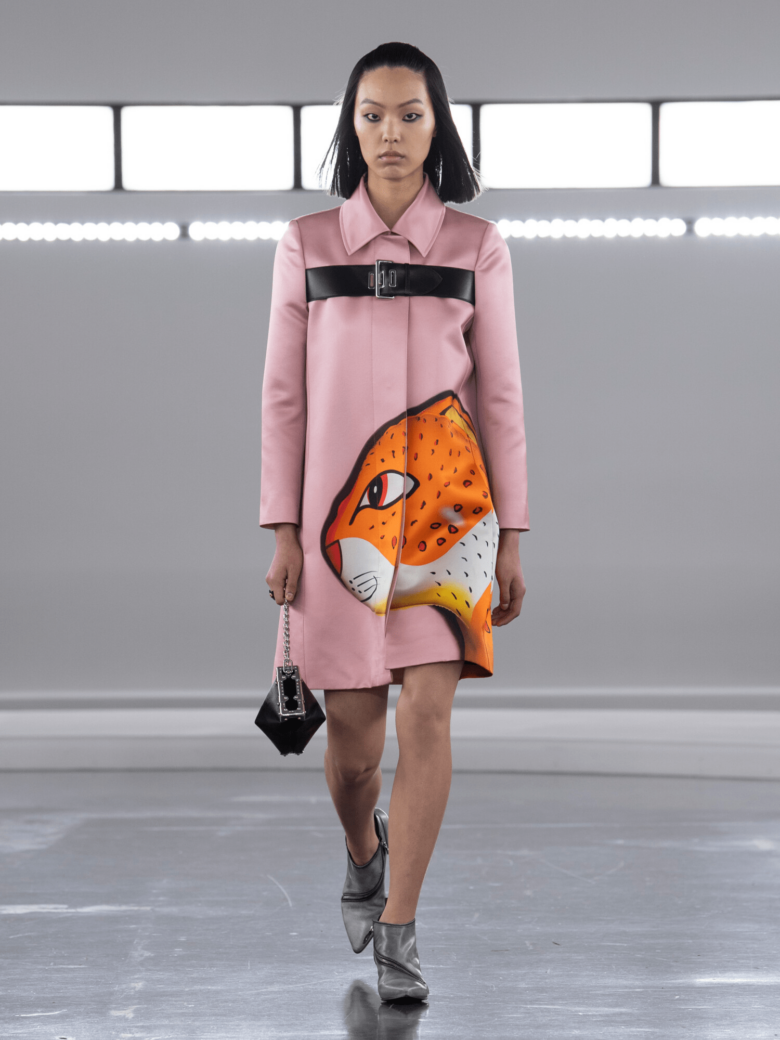Seaweed is fashion’s most exciting new material — and it’s a win for sustainability
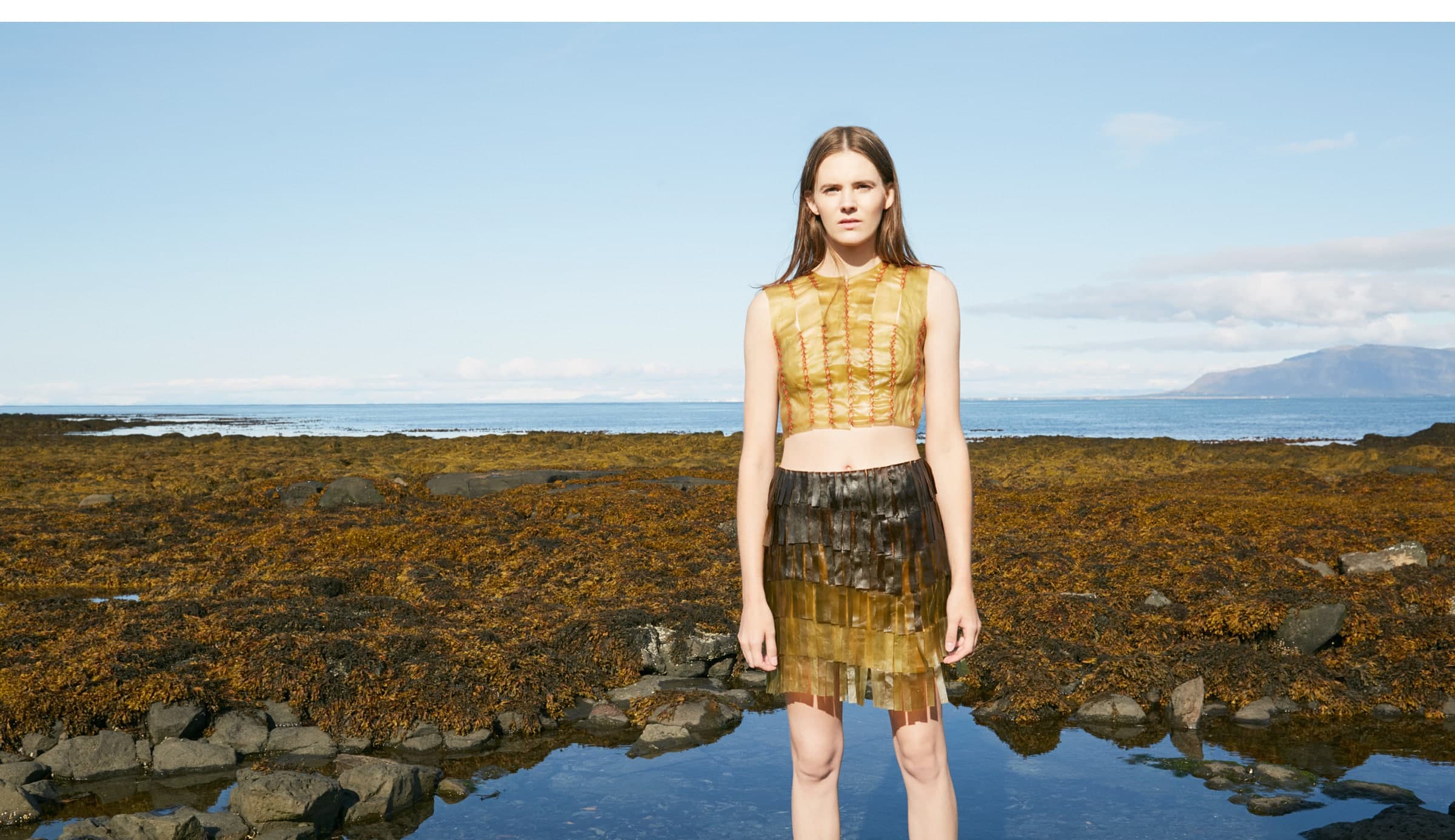
Sustainability has become one of the most sought after facets of contemporary fashion, and for good reason — with climate change becoming a greater threat with each passing day, considering the impact of the materials has become of life-changing importance.
One such team exploring the potential of untapped resources is the Iceland-based Emblamar Studio. Their new art project, ‘Transform’, sees them explore a natural material for clothing that literally washes ashore and has already found its place within other industries: seaweed
Utilising a patented formula to treat the seaweed, which in the past would otherwise have largely gone to waste, they have found an innovative way to use this ‘fabric’ that both highlights our need for sustainability, and could even lead to a new type of garment. Mermaids never seem to fall out of fashion, so maybe seaweed will be part of fashion’s future…
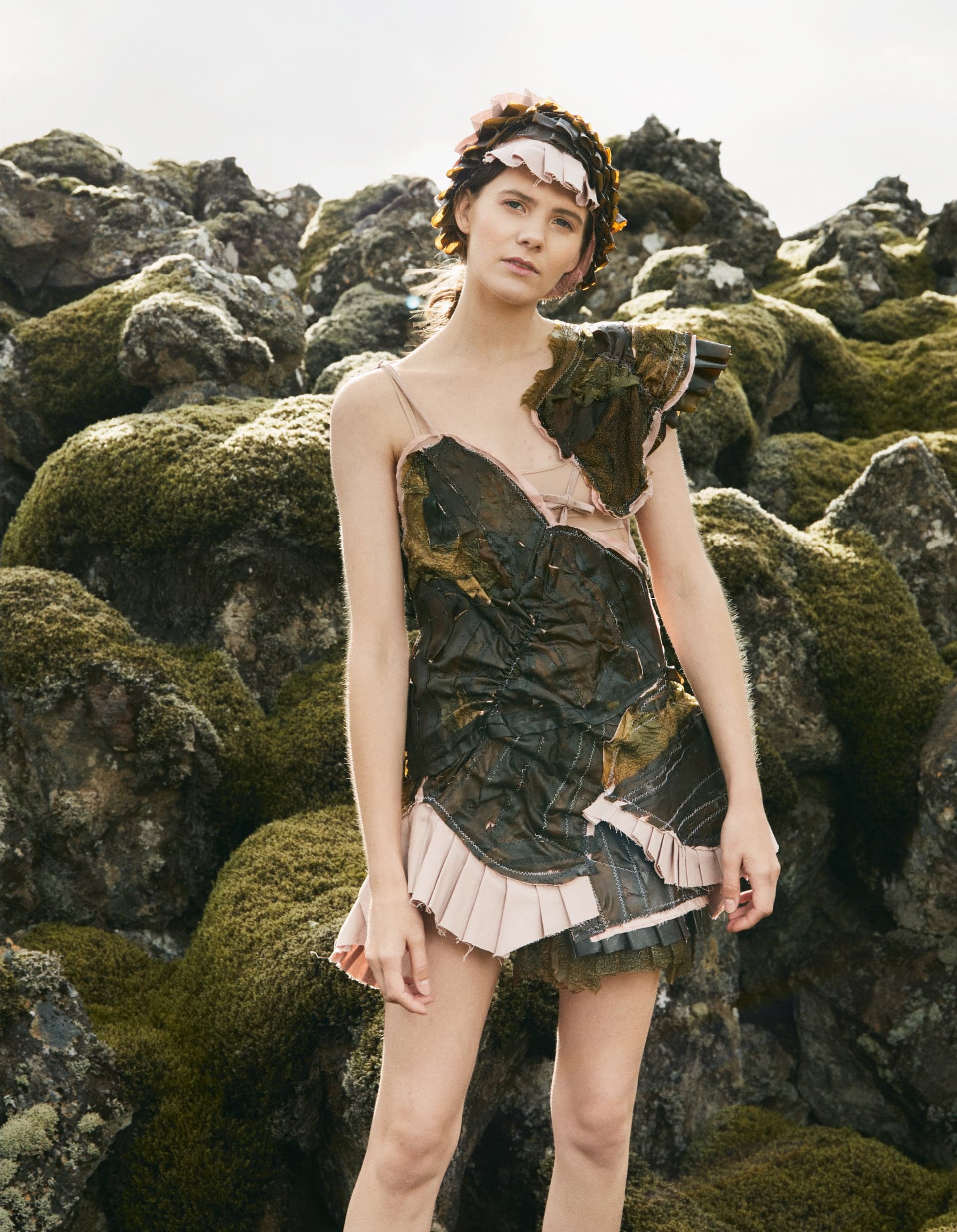
What attracted you guys to seaweed?
Katrín Thorvaldsdottir: I began working with seaweed almost thirty years ago as a result of looking for a material that would be interesting and versatile, as well as ecologically friendly for my artwork. Living close to the sea in Iceland, I became aware of seaweed and its mysterious shapes, textures and beautiful colours and found it was a great material for creating with. The work we do in the studio is an extension of this exploration, as well as a collaboration with others who are also fascinated by the possibilities of seaweed.
What are its unique properties?
Katrín Thorvaldsdottir: The seaweed we use most is oarweed, but also sugar kelp and sometimes wakame. Each has a number of unique properties, such as its unusual textures, the patterns, the colour on its surface and the silky feel, as well as its strength. When you work with natural shapes and textures you find really interesting results in the pieces you make; an other-worldly look, which is sometimes almost reptilian in the texture.
Do you feel that it has historically been underutilized?
Katrín Thorvaldsdottir: I think seaweed is much more utilised now than in the past as people are becoming aware of the wide range of benefits of using it as a food, in skincare and even for industrial uses such as housing insulation. As we see a shift of focus to sustainability in general then there is becoming more innovation in how we can use natural materials that have largely gone to waste in the past.
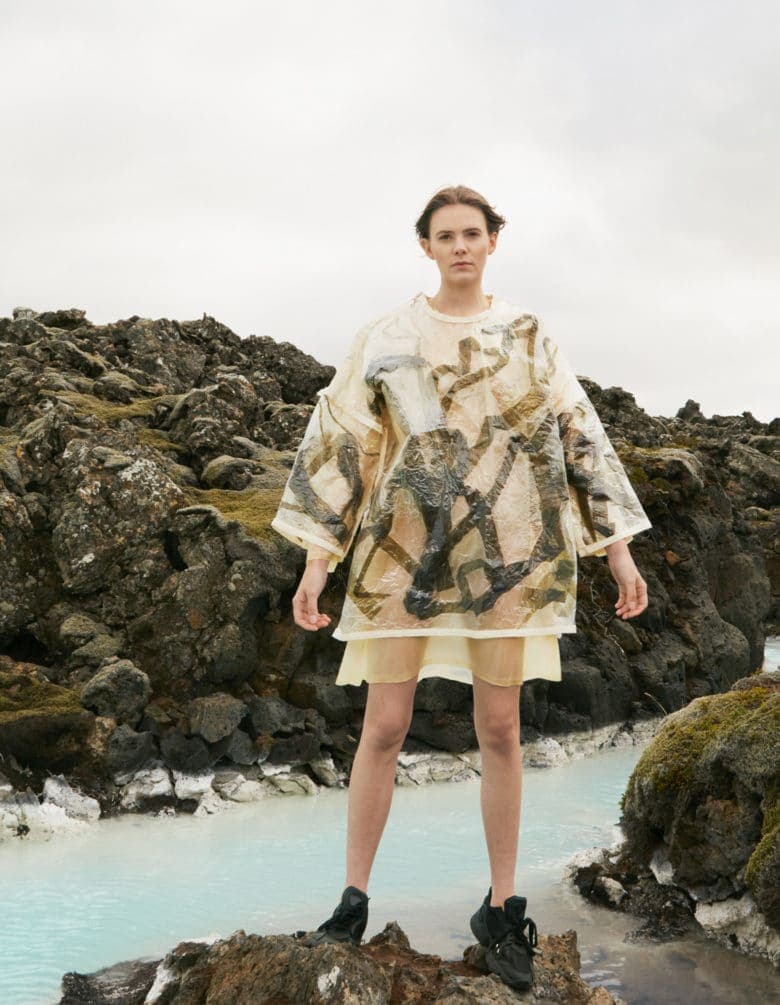
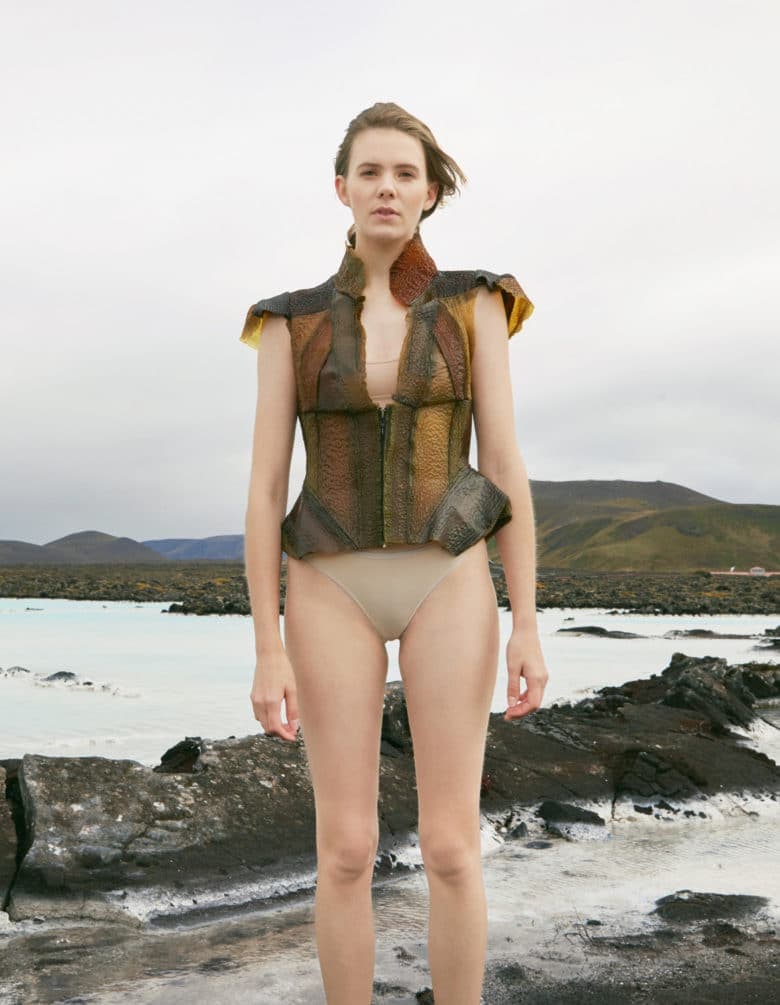
What inspired you to use materials like seaweed and kelp in fashion and art projects?
Katrín Thorvaldsdottir: In my own artwork, I had been making mass and puppets using various materials. I felt it would be more ideal to continue my work with natural materials, and living by the sea, I was always in contact with seaweed. It seemed like a great place to start. Having experimented I found that it offered lots of interesting options for artmaking, and this led to my masks being made predominantly with seaweed, which made them very unique and interesting. We then began exploring how this could expand to being used in fashion, and the development of Emblamar Studio progressed from there.
How important is sustainability to what you do with materials like seaweed and kelp?
Charlie Strand: Sustainability is very important to us and is at the heart of everything we do in the studio. Katrin has been using seaweed in her art and collecting it in a sustainable way for many years, and I come from an eco-fashion background having started my career in fashion working for Katherine Hamnett in the late 90s. I was fascinated and impressed with Katrin’s desire to explore seaweed as a material and found this to be an exciting challenge to be part of. We are both keen to see how far we can take seaweed in a design context, and so the studio projects were conceived as a result of this mission.
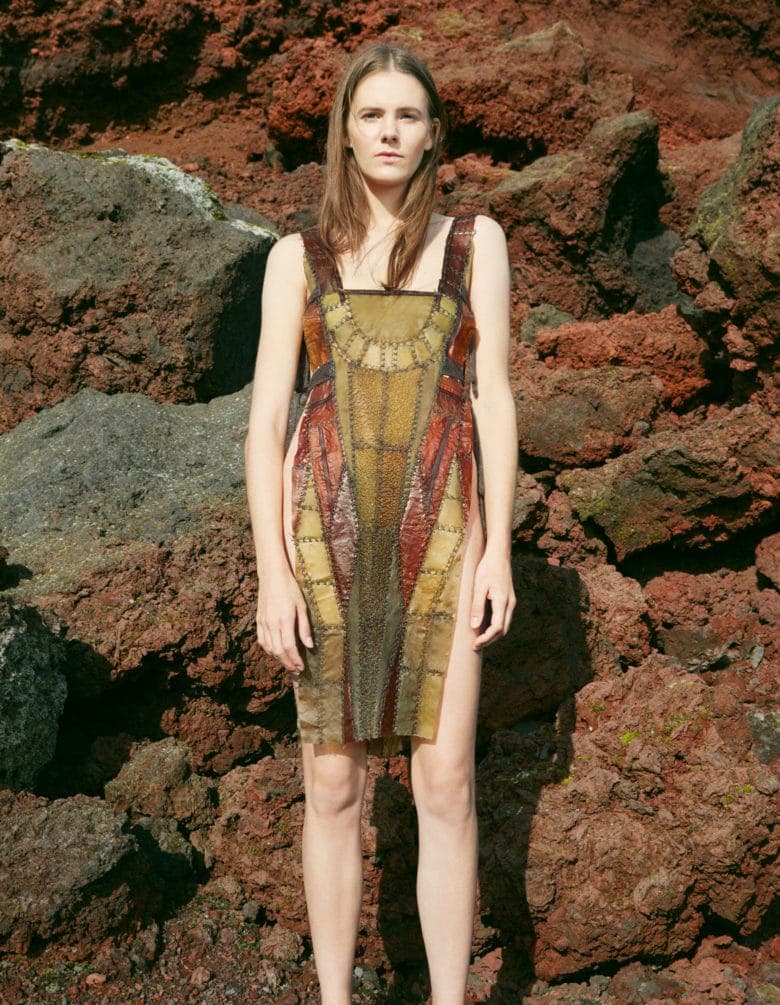
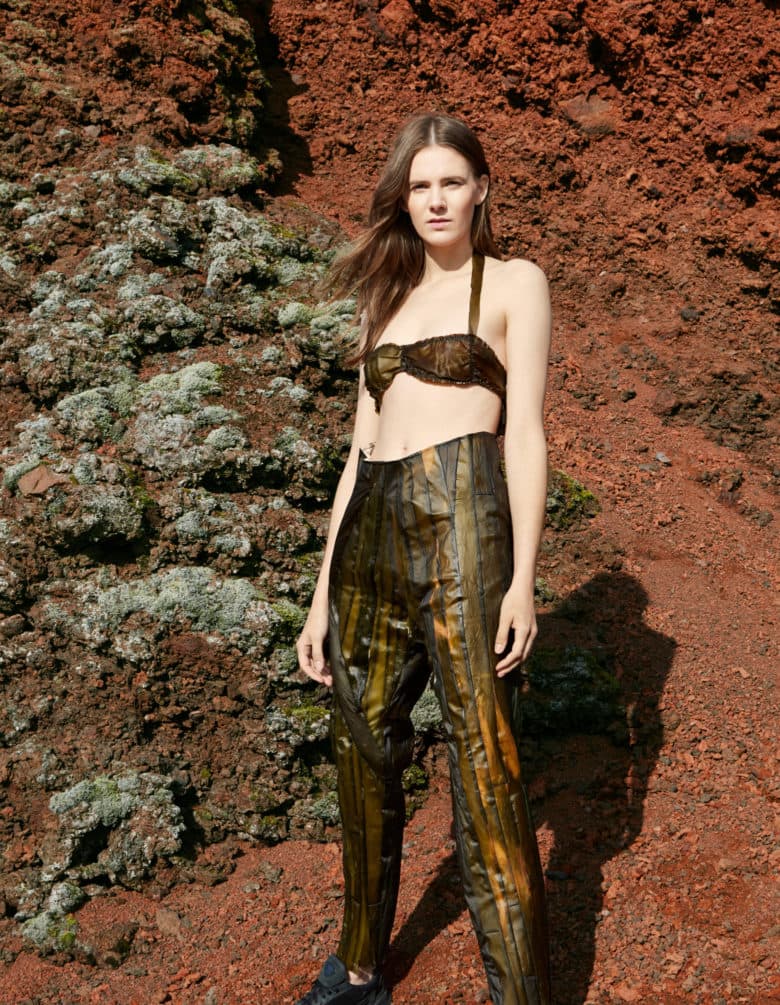
What was the inspiration behind using kelp in particular for your project ‘Transform’?
Charlie Strand: Transform was conceived because we were keen to experiment with seaweed as a potential material for use in fashion. After we had made some basic tests ourselves to see how it reacted to stitching and binding, we decided it would be interesting and productive to enlist a team of talented designers with a wide range of styles and skills to create fashion pieces that show off the material, but also explore different technical approaches for how to work with seaweed. I sought out designers who were interested in exploring a new untapped sustainable material, and had experience in working with unusual or challenging materials that required alternative approaches to create garments.
All of the design team that took part in this project were incredibly innovative in the way that they approached the design process, and no two designers created anything even remotely similar. I decided to keep each designers’ work a complete mystery from each other so that they could be free to create without any pressure or influence from what the others were making. This meant each designer really immersed themselves in the creative process. We felt the project was a great success for highlighting what was possible with seaweed — both as a proof of concept but also as a technical showcase for the designers themselves and the seaweed. They had beautifully transformed bags of seaweed into exciting high concept fashion pieces.
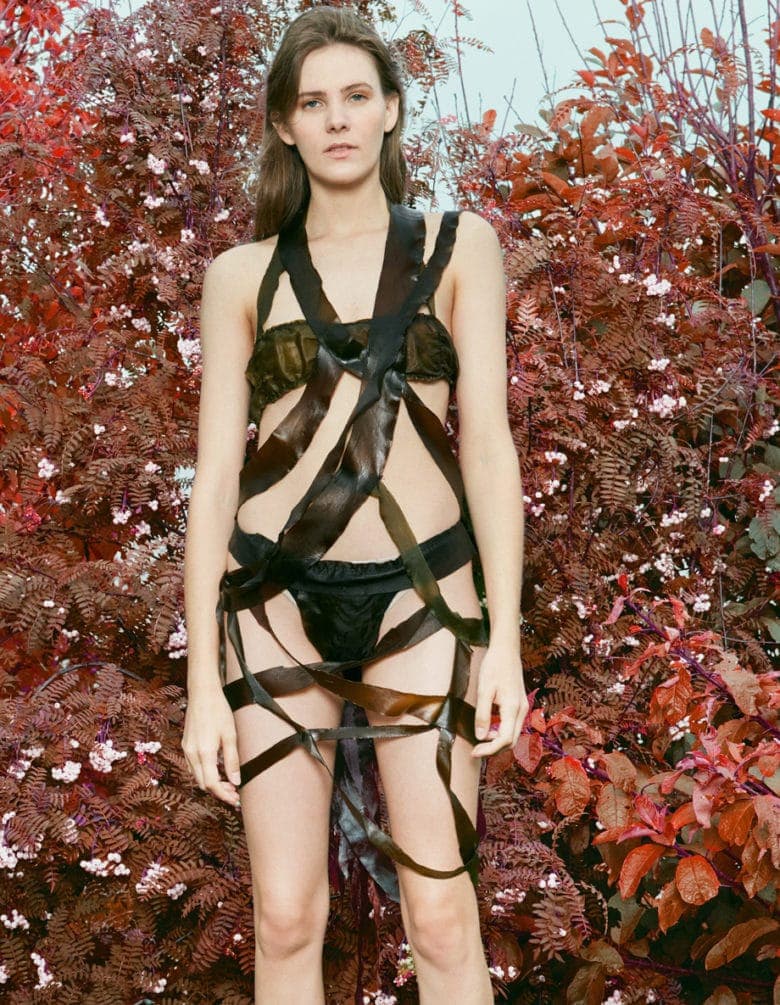
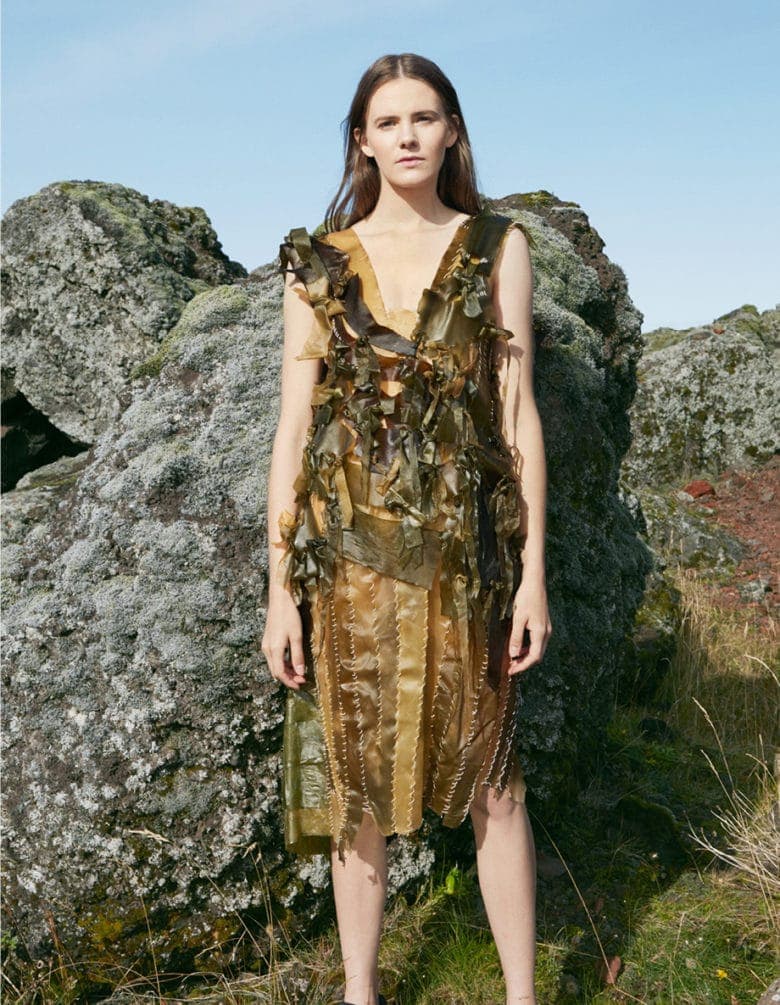
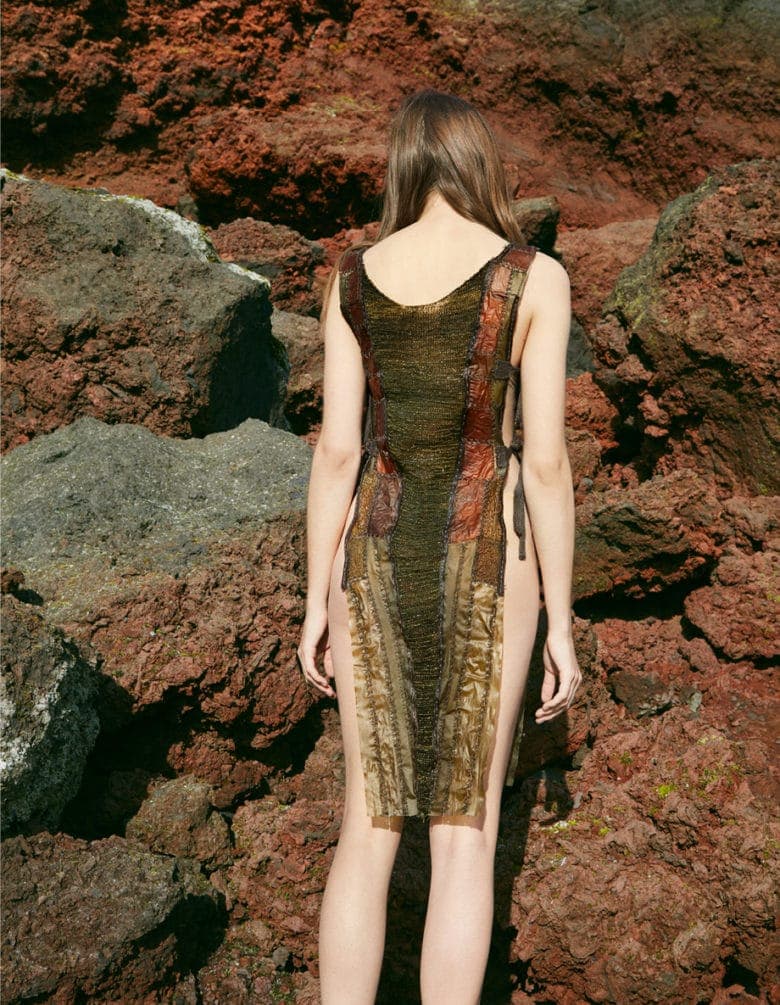
Are the garments you made actually wearable? And if they are, how did you alter/treat them to make them so?
Charlie Strand: The wearability of each piece varies, as does the functionality. Some are quite robust and can be worn quite easily, and others are more like one-off art pieces that are intended more for the visual benefit of seeing how kelp looks like as a material. However, the project does illustrate that it is perfectly possible to create more wearable uses for kelp and to design in a way that the garment can withstand normal wear, especially when used alongside another material the kelp is secured and strong. The process for treating the seaweed for use as a material is a patented formula conceived by Katrín, and can be expanded to use for preserving seaweed in a variety of situations, not only for use in garments.
Do you think that utilising natural resources like seaweed and kelp could create a more sustainable future within fashion and possibly counteract the effect of fast fashion?
Katrín Thorvaldsdottir: We are optimistic that seaweed can be used as a material in fashion design as we’ve demonstrated in ‘Transform’ but also it has the potential to be used in a wider range of situations, many of which are yet to be explored. The main point for us in creating these projects is to start a conversation and hopefully inspire others to find solutions to suitability challenges using seaweed. Fashion and art projects are an ideal way to start this chain of events because the visual impact and the excitement of seeing the seaweed in this context often has a greater chance of producing curiosity rather than simply reading about its potential. As long as it is harvested responsibly the possibilities are endless, so we hope to draw attention to this wonderful resource.

